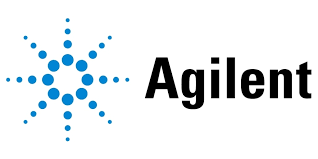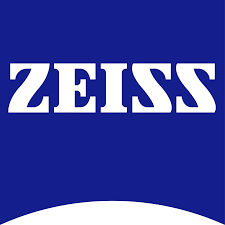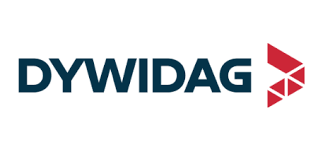Blood Clot Retrieval Devices Market Report
Published Date: March 16, 2024 | Report Code: blood-clot-retrieval-devices
Blood Clot Retrieval Devices Market Size, Share, Industry Trends and Forecast to 2033
This report provides a comprehensive overview of the Blood Clot Retrieval Devices market, including detailed insights on market size, growth projections, segmentation, and key players from 2023 to 2033.
| Metric | Value |
|---|---|
| Study Period | 2023 - 2033 |
| 2023 Market Size | $3.50 Billion |
| CAGR (2023-2033) | 6.8% |
| 2033 Market Size | $6.88 Billion |
| Top Companies | Medtronic , Penumbra, Inc., Boston Scientific |
| Last Modified Date | 02 June 2025 |
Blood Clot Retrieval Devices Market Report (2023 - 2033)
Blood Clot Retrieval Devices Market Overview
What is the Market Size & CAGR of Blood Clot Retrieval Devices market in 2023?
Blood Clot Retrieval Devices Industry Analysis
Blood Clot Retrieval Devices Market Segmentation and Scope
Request a custom research report for industry.
Blood Clot Retrieval Devices Market Analysis Report by Region
Europe Blood Clot Retrieval Devices Market Report:
In Europe, the market will grow significantly from 1.25 billion USD in 2023 to 2.46 billion USD by 2033. Factors like government initiatives to improve healthcare access and a prevalence of chronic diseases drive the growth.Asia Pacific Blood Clot Retrieval Devices Market Report:
In the Asia Pacific region, the market is anticipated to experience robust growth, with an increase from approximately 0.64 billion USD in 2023 to 1.26 billion USD by 2033. The rise can be attributed to an aging population and increasing investments in healthcare infrastructure.North America Blood Clot Retrieval Devices Market Report:
North America remains a key player in the market, with a projected increase from 1.14 billion USD in 2023 to 2.24 billion USD in 2033. The region benefits from a well-established healthcare system and continuous innovation in medical technologies.South America Blood Clot Retrieval Devices Market Report:
The South American market for Blood Clot Retrieval Devices is expected to grow from 0.33 billion USD in 2023 to 0.65 billion USD in 2033, driven by expanding access to advanced medical care and rising awareness of stroke management.Middle East & Africa Blood Clot Retrieval Devices Market Report:
The Middle East and Africa market is expected to see modest growth from 0.14 billion USD in 2023 to 0.28 billion USD in 2033, supported by expensive healthcare expansion across key markets.Request a custom research report for industry.
Blood Clot Retrieval Devices Market Analysis By Product Type
Global Blood Clot Retrieval Devices Market, By Product Type Market Analysis (2024 - 2033)
Mechanical Devices hold a substantial market share, valued at 2.99 billion USD in 2023 and forecasted to reach 5.88 billion USD by 2033, accounting for 85.45% of the market. Aspiration Systems are smaller but important, growing from 0.51 billion USD to 1.00 billion USD, capturing 14.55% of the market.
Blood Clot Retrieval Devices Market Analysis By Application
Global Blood Clot Retrieval Devices Market, By Application Market Analysis (2024 - 2033)
In the application segment, Neurology is predominant, with the market growing from 2.37 billion USD to 4.66 billion USD (67.78%). Cardiology follows, projected to grow from 0.75 billion USD to 1.47 billion USD (21.43%), while Vascular Surgery will increase from 0.38 billion USD to 0.74 billion USD (10.79%).
Blood Clot Retrieval Devices Market Analysis By End User
Global Blood Clot Retrieval Devices Market, By End-User Market Analysis (2024 - 2033)
Hospitals dominate the market, with a substantial increase from 2.37 billion USD to 4.66 billion USD (67.78%). Outpatient Surgical Centers will grow from 0.75 billion USD to 1.47 billion USD (21.43%), while Specialty Clinics will increase from 0.38 billion USD to 0.74 billion USD (10.79%).
Blood Clot Retrieval Devices Market Analysis By Distribution Channel
Global Blood Clot Retrieval Devices Market, By Distribution Channel Market Analysis (2024 - 2033)
Direct Sales is the leading distribution channel, set to grow from 2.37 billion USD to 4.66 billion USD (67.78%), followed by Online Sales, which will rise from 0.75 billion USD to 1.47 billion USD (21.43%), and Medical Supply Stores, expected to expand from 0.38 billion USD to 0.74 billion USD (10.79%).
Blood Clot Retrieval Devices Market Analysis By End User Demographics
Global Blood Clot Retrieval Devices Market, By End-User Demographics Market Analysis (2024 - 2033)
In demographic segments, adults represent a significant share, with market growth from 2.99 billion USD to 5.88 billion USD (85.45%). Pediatrics, while smaller, is also growing from 0.51 billion USD to 1.00 billion USD (14.55%).
Blood Clot Retrieval Devices Market Trends and Future Forecast
Request a custom research report for industry.
Global Market Leaders and Top Companies in Blood Clot Retrieval Devices Industry
Medtronic :
Medtronic is a leading player in developing advanced Blood Clot Retrieval Devices, offering innovative mechanical solutions for vascular surgery.Penumbra, Inc.:
Penumbra specializes in aspiration devices, leveraging advanced technology to enhance stroke treatment outcomes globally.Boston Scientific:
Boston Scientific provides a range of blood clot retrieval solutions designed for efficient and safe clinical outcomes in stroke management.We're grateful to work with incredible clients.









Related Industries
FAQs
What is the market size of blood Clot Retrieval Devices?
The market size of blood-clot-retrieval devices is projected to reach approximately $3.5 billion by 2033, with a compound annual growth rate (CAGR) of 6.8% from 2023. This indicates a healthy growth trajectory within this medical device sector.
What are the key market players or companies in this blood Clot Retrieval Devices industry?
Key players in the blood-clot-retrieval devices industry include prominent medical device manufacturers. These companies lead in innovation, production, and distribution of advanced clot retrieval technologies, contributing significantly to the market expansion and research capabilities.
What are the primary factors driving the growth in the blood Clot Retrieval Devices industry?
Growth factors in the blood-clot-retrieval devices industry include increasing incidences of thrombosis, advancements in medical technology, and rising awareness of stroke prevention. Enhanced healthcare spending and improving healthcare infrastructure also drive market expansion.
Which region is the fastest Growing in the blood Clot Retrieval Devices?
During the forecast period from 2023 to 2033, Europe is expected to grow fastest, evolving from $1.25 billion to $2.46 billion. Asia Pacific will also see significant growth, expanding from $0.64 billion to $1.26 billion, indicating high regional demand.
Does ConsaInsights provide customized market report data for the blood Clot Retrieval Devices industry?
Yes, ConsaInsights offers customized market report data tailored to the unique needs of clients in the blood-clot-retrieval devices industry. This includes detailed insights on specific segments and trends relevant to businesses.
What deliverables can I expect from this blood Clot Retrieval Devices market research project?
Deliverables from the blood-clot-retrieval devices market research project include comprehensive market analysis, forecasts, competitive landscape assessments, and insights into segmentation by region and application, tailored to your strategic needs.
What are the market trends of blood Clot Retrieval Devices?
Market trends include a shift toward minimally invasive procedures, increasing demand for innovative retrieval systems, and a focus on improving patient outcomes. Moreover, integration of AI and smart technologies is influencing product development and operational efficiencies.
Customize Blood Clot Retrieval Devices Market Report market research report
- ✔ Get in-depth analysis of Blood Clot Retrieval Devices market size, growth, and forecasts.
- ✔ Understand Blood Clot Retrieval Devices's regional dynamics and industry-specific trends.
- ✔ Identify potential applications, end-user demand, and growth segments in Blood Clot Retrieval Devices
